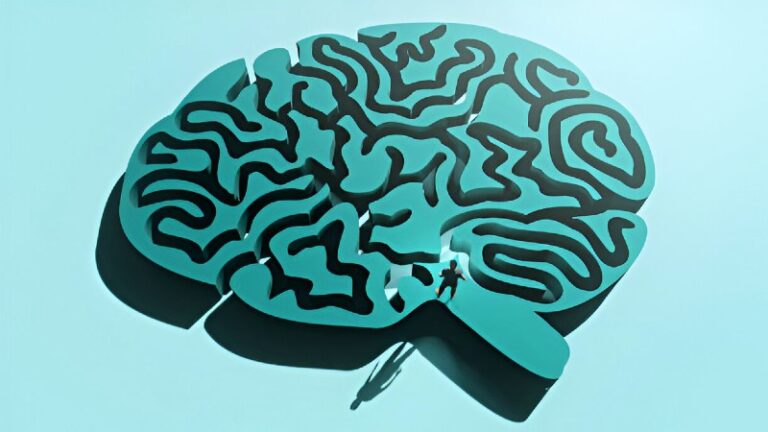Have you ever stopped to wonder how your brain keeps track of every single moment, face, and fact that makes up your unique existence?
It’s a profound question, and the answer lies in the marvels of memory. Far from being a simple recording device, your brain is a dynamic, ever-evolving archive, constantly shaping and reshaping your past to help you navigate your present and future. Understanding how your brain stores your life story isn’t just fascinating; it’s key to appreciating the incredible adaptability that defines human experience.
The Triplicate Archive
For decades, scientists viewed memory storage as a relatively straightforward process. However, groundbreaking research from Professor Flavio Donato’s group at the Biozentrum, University of Basel, has unveiled a remarkable new insight your brain creates three copies of every memory you make.
These triplicate copies aren’t just redundant backups; they’re strategically distributed among different groups of neurons in the hippocampus, a brain region critical for memory formation. These neuron groups arise at various stages of embryonic development and each plays a unique role in the life cycle of a memory:
- Early-born neurons: These neurons are designed for memory longevity. Their initial memory copy might be weak, almost like a faint whisper, but it gradually gains strength over time, much like a fine wine maturing.
- Late-born neurons: The memory copy in these neurons starts strong, like a loud echo. However, it tends to fade over time, eventually becoming inaccessible to the brain.
- Compromise neurons: Nestled between these two extremes, a third group of neurons creates a memory copy that remains stable over time.
Memory’s Three Acts
To truly appreciate the marvels of memory, it’s helpful to break down its journey into three fundamental stages:
- Encoding: This is the initial step, like translating an experience into a unique code your brain can understand and save. When you meet someone new, your brain encodes their name and face, preparing them for future recall.
- Storage: Once encoded, memories need a place to reside. Your brain has both short-term memory (STM), which holds a small amount of information for a fleeting moment (like a phone number you’re about to dial), and long-term memory (LTM), which safeguards important information for extended periods, from days to decades.
- Retrieval: This is when memories come back to life. When you remember a fun vacation or a historical fact, your brain is actively reconstructing that memory, bringing it into your conscious awareness.
The Ever-Changing Story
It might seem counterintuitive, but the act of remembering isn’t just a simple replay. Recent studies on reconsolidation show that each time you retrieve a memory, you’re actually altering its structure. Each time we access a memory, it’s as if we are rewriting our own history, allowing space for new interpretations and insights. This means your memories are fluid, influenced by your current emotional state and environmental factors every time you access them.
A Spectrum of Memory
Beyond these stages, your brain employs various types of memory, each serving a unique cognitive function:
| Memory Type | Description | Example |
| Sensory Memory | Briefest form, capturing quick snapshots of sensory information (visual, auditory, etc.). | The lingering glow after staring at a bright light. |
| Working Memory | The mental workspace for juggling information to solve problems or make decisions. | Mentally calculating a math problem. |
| Episodic Memory | Your personal storyteller, recalling specific events, experiences, and their contexts. | Remembering your last birthday party. |
| Semantic Memory | Holds general facts, concepts, and knowledge without personal context. | Knowing that Paris is the capital of France. |
| Procedural Memory | Your how-to guide for skills and habits, often operating unconsciously. | Riding a bike or playing a musical instrument. |
| Declarative Memory | Your megaphone for facts and events that you can consciously recall and state (includes episodic and semantic). | Recalling historical events or sharing a personal story. |
| Implicit Memory | Works backstage, influencing actions without conscious awareness. | Automatically driving a familiar route. |
| Flashbulb Memory | Vivid, highly detailed memories of significant, often emotional, public or personal events. | Remembering where you were during a major historical event. |
| Prospective Memory | Your future planner, reminding you to perform actions in the future. | Remembering to attend an upcoming meeting. |
Implications for Life
The dynamic nature of memory holds profound implications for both mental health and educational practices. In therapeutic settings, particularly for conditions like Post-Traumatic Stress Disorder (PTSD), harnessing the brain’s ability to adapt and recontextualize memories offers new avenues for diminishing the emotional hold of painful experiences.
Similarly, educational strategies can be designed to align more effectively with our innate memory processes, moving beyond rote memorization. By understanding how the brain naturally encodes and consolidates information, we can develop methods that enhance knowledge retention and its application over time.
Conclusion
The revelation that memories are as dynamic and adaptable as life itself is a truly fascinating discovery. Scientists hope that by understanding what drives memories to be encoded and modified, they can eventually find ways to reduce the impact of disturbing memories or even recover those that seem to have been lost. The human brain remains one of the most complex and awe-inspiring frontiers of scientific exploration. While we may never fully uncover all its secrets, each new discovery deepens our appreciation for the intricate way our brains store and shape the very essence of who we are.
What aspects of your memory do you find most fascinating?
Frequently Asked Questions (FAQs)
How does the brain store memories?
The brain stores memories through a complex process involving multiple neuron groups, notably in the hippocampus, where new research suggests three copies of each memory are created for different purposes.
What are the three stages of memory?
The three main stages of memory are encoding (turning experiences into brain code), storage (keeping coded information), and retrieval (recalling memories).
Can recalling a memory change it?
Yes, recent studies on reconsolidation indicate that the act of retrieving a memory can actually alter its structure, influencing it with current emotions and environmental factors.
What is the difference between short-term and long-term memory?
Short-term memory holds a small amount of information for a brief period, while long-term memory stores important information for extended durations, from days to a lifetime.
How does understanding memory help with mental health?
Understanding the dynamic nature of memory can aid in therapeutic settings, such as addressing PTSD, by helping individuals recontextualize painful memories and diminish their emotional hold.
What is semantic memory?
Semantic memory is a type of long-term memory that holds general facts, concepts, and knowledge without personal context, like knowing historical dates or scientific principles.
How can I improve my memory?
Improving memory involves various strategies, including engaging in active learning, getting adequate sleep, maintaining a healthy diet, and practicing memory-enhancing techniques.


